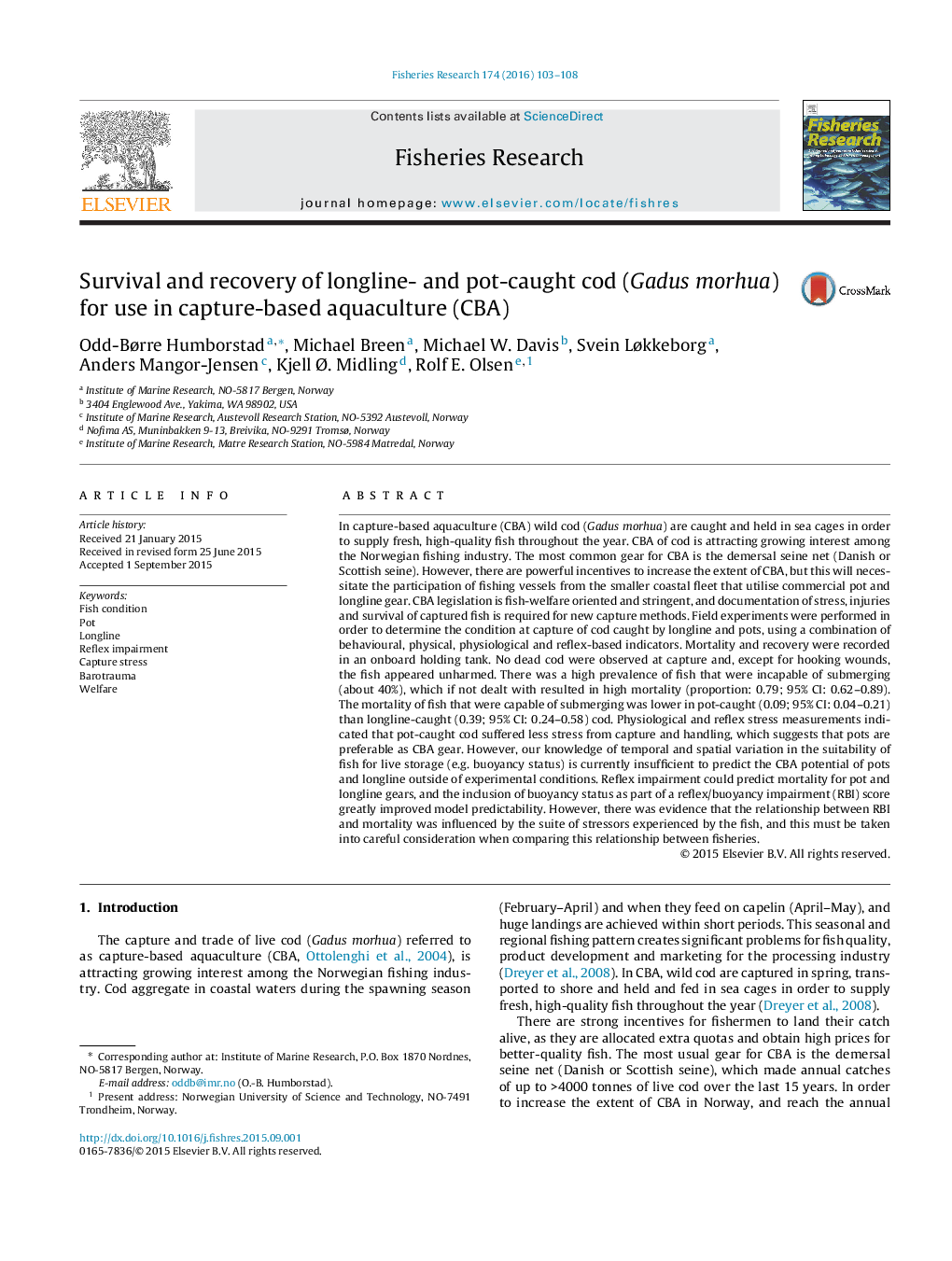| کد مقاله | کد نشریه | سال انتشار | مقاله انگلیسی | نسخه تمام متن |
|---|---|---|---|---|
| 6385568 | 1626795 | 2016 | 6 صفحه PDF | دانلود رایگان |
عنوان انگلیسی مقاله ISI
Survival and recovery of longline- and pot-caught cod (Gadus morhua) for use in capture-based aquaculture (CBA)
دانلود مقاله + سفارش ترجمه
دانلود مقاله ISI انگلیسی
رایگان برای ایرانیان
کلمات کلیدی
موضوعات مرتبط
علوم زیستی و بیوفناوری
علوم کشاورزی و بیولوژیک
علوم آبزیان
پیش نمایش صفحه اول مقاله

چکیده انگلیسی
In capture-based aquaculture (CBA) wild cod (Gadus morhua) are caught and held in sea cages in order to supply fresh, high-quality fish throughout the year. CBA of cod is attracting growing interest among the Norwegian fishing industry. The most common gear for CBA is the demersal seine net (Danish or Scottish seine). However, there are powerful incentives to increase the extent of CBA, but this will necessitate the participation of fishing vessels from the smaller coastal fleet that utilise commercial pot and longline gear. CBA legislation is fish-welfare oriented and stringent, and documentation of stress, injuries and survival of captured fish is required for new capture methods. Field experiments were performed in order to determine the condition at capture of cod caught by longline and pots, using a combination of behavioural, physical, physiological and reflex-based indicators. Mortality and recovery were recorded in an onboard holding tank. No dead cod were observed at capture and, except for hooking wounds, the fish appeared unharmed. There was a high prevalence of fish that were incapable of submerging (about 40%), which if not dealt with resulted in high mortality (proportion: 0.79; 95% CI: 0.62-0.89). The mortality of fish that were capable of submerging was lower in pot-caught (0.09; 95% CI: 0.04-0.21) than longline-caught (0.39; 95% CI: 0.24-0.58) cod. Physiological and reflex stress measurements indicated that pot-caught cod suffered less stress from capture and handling, which suggests that pots are preferable as CBA gear. However, our knowledge of temporal and spatial variation in the suitability of fish for live storage (e.g. buoyancy status) is currently insufficient to predict the CBA potential of pots and longline outside of experimental conditions. Reflex impairment could predict mortality for pot and longline gears, and the inclusion of buoyancy status as part of a reflex/buoyancy impairment (RBI) score greatly improved model predictability. However, there was evidence that the relationship between RBI and mortality was influenced by the suite of stressors experienced by the fish, and this must be taken into careful consideration when comparing this relationship between fisheries.
ناشر
Database: Elsevier - ScienceDirect (ساینس دایرکت)
Journal: Fisheries Research - Volume 174, February 2016, Pages 103-108
Journal: Fisheries Research - Volume 174, February 2016, Pages 103-108
نویسندگان
Odd-Børre Humborstad, Michael Breen, Michael W. Davis, Svein Løkkeborg, Anders Mangor-Jensen, Kjell Ã. Midling, Rolf E. Olsen,